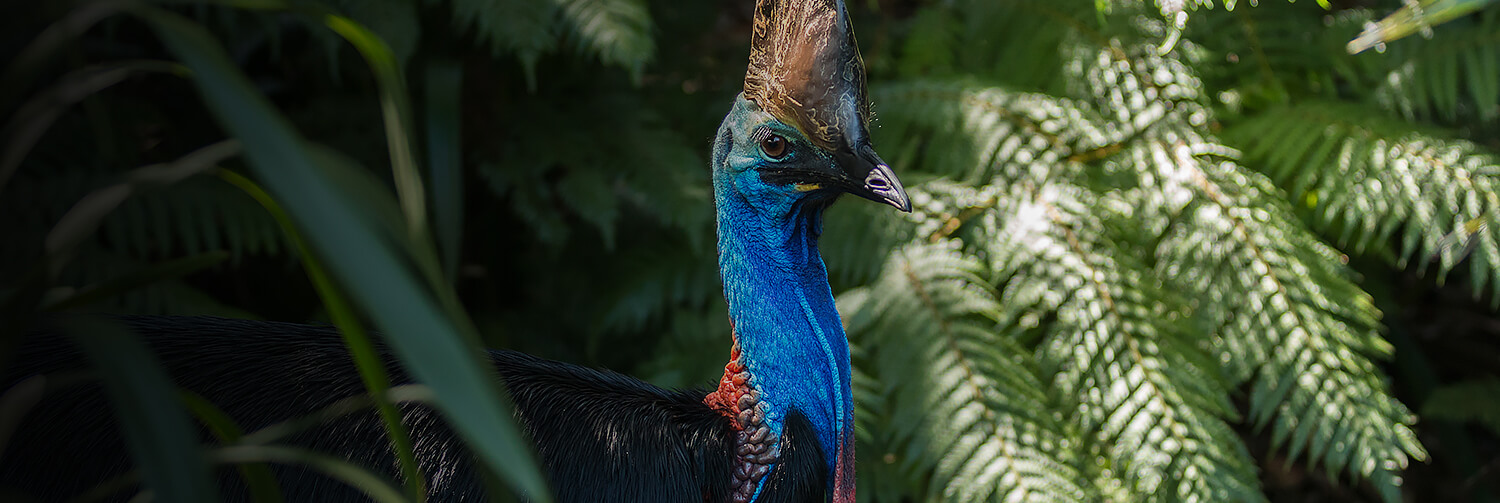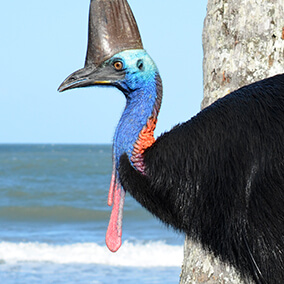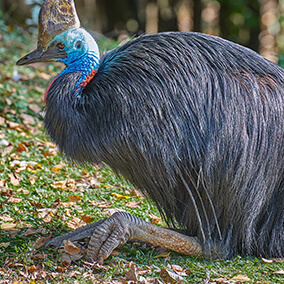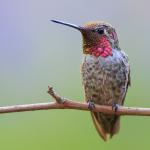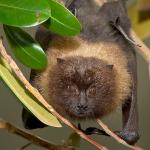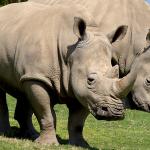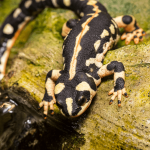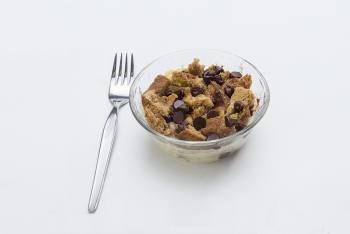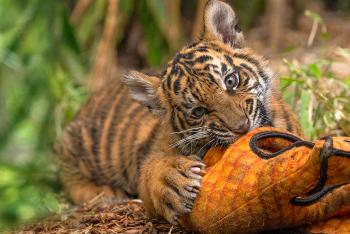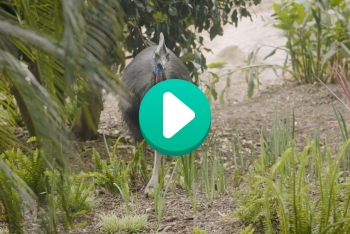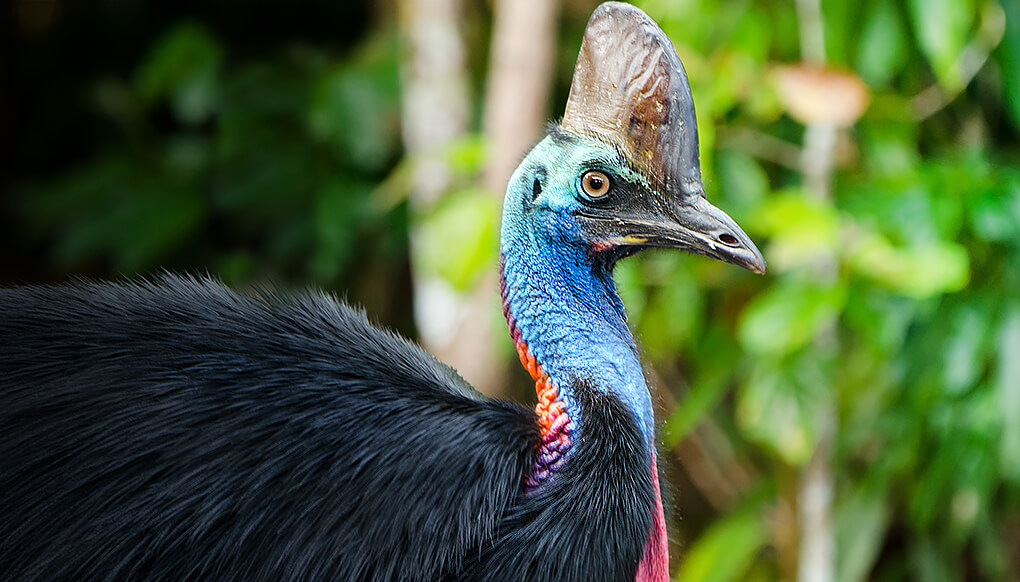
Southern cassowary

Birds


Stable
facts

description

Have feathers, don't fly
These big birds have feathers, but they can’t fly—their wings are much too small. But their fluffy feathers help the bird stay dry in the damp rainforest. They also protect the bird’s skin from sharp thorns.

Watch the feet!
Although this bird can’t flap away from danger, it can, and does run quickly. With its powerful legs, a cassowary can reach about 30 miles per hour! Each foot also has a dagger-like claw. When the bird feels threatened, one kick can injure a predator.
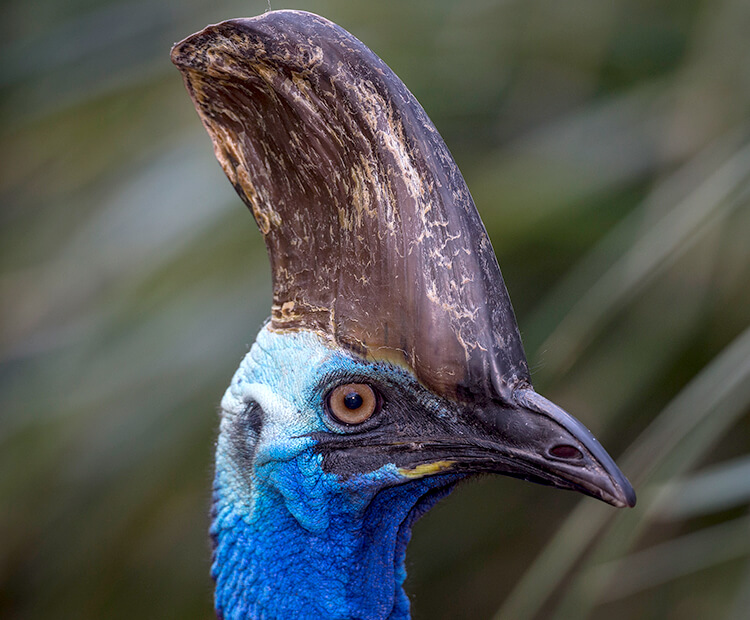
Notice that knob
That strange knob on top of a cassowary’s head is called a casque (Kaa-sk), or helmet. The hard outside of the casque is made of keratin, like your fingernails. Inside, there is a spongy material. No one knows for certain why these birds have a casque, but there are guesses! Perhaps it shows a bird’s age, or protects its head as it pushes through tangles of branches.

Listen up
Cassowaries make a few sounds to “talk” with one another. They hiss, whistle, and clap their bills. They also make a low rumbling sound that people very nearby can feel, but not hear. That doesn’t happen often, though, because cassowaries are very shy in the wild and difficult to observe.

Going solo—sometimes
They spend most of their time alone. At breeding time, cassowaries find a mate. The female scrapes a spot in the ground and lays 3 to 5 green eggs. And then she leaves! The male sits on the eggs until they hatch, and takes care of the chicks for nearly a year, teaching them where to find food.
When a cassowary eats a piece of fruit, the flesh gets digested, but the seed passes through. As the bird wanders the forest, its droppings contain fruit seeds that can grow into trees. This makes cassowaries an important part of their rainforest home!

